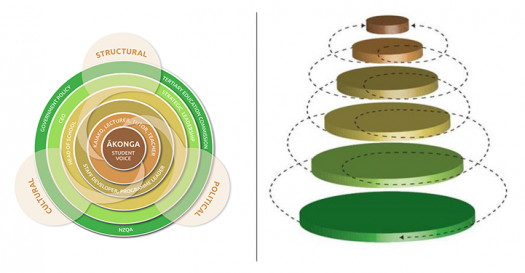
Professional development to improve outcomes for learners aged under 25
Status
Completed: 3 December 2016
Project Details
A two-year project exploring the teaching and learning approaches that worked best for learners under 25 years of age. A collaboration of Eastern Institute of Technology, Bay of Plenty Polytechnic, Te Whare Wānanga o Awanuiārangi and Waiariki Institute of Technology.
Aims:
The primary aim of the project was to create an integrated professional development decision-making model for teachers of students aged 25 and younger.
Methodology:
The project's methodology included:
- kaupapa Māori methodology and conceptual framework
- two key research questions: How do we know which teaching and learning approaches work best for learners under 25 years of age? How do we develop effective tertiary teachers, well-equipped to support their learning?
Team
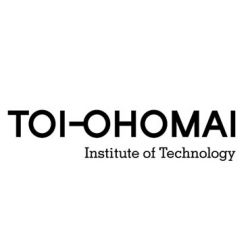
Dr Judith Honeyfield
Project co-leader
Toi Ohomai Institute of Technology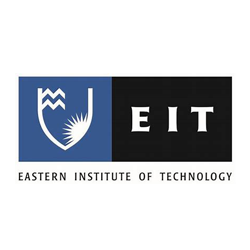
Dr Lesley Petersen
Project co-leader
Eastern Institute of Technology
Dr Helen Anderson
Bay of Plenty Polytechnic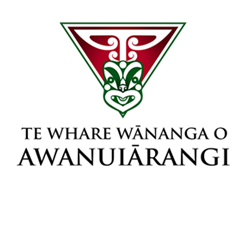
Dr Vaughan Bidois
Te Whare Wānanga o Awanuiārangi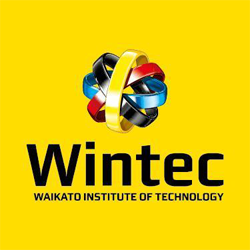
Mike Crossman
Wintec
Liz Fitchett
Waiariki Institute of Technology
Claire Hague
Eastern Institute of Technology
Dr Heather Hamerton
Bay of Plenty Polytechnic
Dr Kay Morris-Mathews
Eastern Institute of Technology
Dr Clarke Raymond
Waiariki Institute of Technology
Claire Schnell
Waiariki Institute of Technology
Cath Fraser
Consultant
Independent Contractor
Professor Graham Smith
Te Whare Wānanga o Awanuiārangi
Mariana Van der Walt
Wintec
Helen van Toor
Waiariki Institute of TechnologyStatus
Funding
$303,320.00 (excl GST)
Key Findings
Findings on learners aged under 25 years of age
- Students often knew what they needed to learn, but needed teachers and stakeholders to consult them to find out.
- Developing life skills alongside academic and work-ready skills was essential.
- Three quarters preferred practical learning opportunities.
- Students wanted to choose how they approached their own learning.
- They wanted a different structure and teaching and learning approach to the compulsory school environment.
- Technologies and visual learning media as learning tools were favoured ways to learn.
- Effective relationships between students and between students and teachers improved learning experiences and outcomes.
- Pastoral care was considered an important means for providing wrap-around support and learning opportunities for students with challenging personal lives.
Findings on professional development
- Professional development focused on obtaining and acting on learner feedback was essential.
- Relational and relevant learning and teaching was key to improving outcomes.
- High-quality teaching and learning environments with student support made a difference.
- Students valued learning and teaching activities that helped them transition to and prepare for employment, higher learning and careers.
- Communities of practice were effective professional development for teachers of students aged under 25.
- Educational leadership that understood content knowledge, pedagogy and teacher support was essential.
- Teachers highly valued reflective and reflexive learning and teaching conversations that occurred in multiple places in an educational setting.
Key Recommendations
Recommendations for teachers and stakeholders
- Learner consultation | Consult students on what they need to learn effectively.
- Skills development | Teach life skills alongside academic and work-ready skills.
- Practical learning | Provide practical learning opportunities.
- Learning choices | Allow students to choose how they approach their own learning.
- Provide new opportunities | Give students a change to experience a teaching and learning approach that is different to the compulsory school environment.
- Use different media | Use technologies and visual learning media as learning tools.
- Establish relationships | Encourage learners to relate to one another and to their teachers as a way to improve the learning experience and learning outcomes.
- Develop pastoral care options | Give students the wrap-around support they need to overcome challenging personal lives.
Recommendations for professional development
- New integrated professional development decision-making model | Whole organisations (including teachers, staff developers and management) should trial a new multi-tiered professional development approach that puts the ākonga/student voice at the centre (refer to figure 1).
- Relational and relevant learning and teaching | leaders should ask themselves and reflect on the following questions: What do I need to know and do to support teachers catering for students with diverse needs? How do I support and facilitate staff development that ensures the diverse needs of students are met in my organisation? How do I promote and ensure that teachers have access to a range of opportunities to develop pedagogical, learning and teaching skills?
- Leadership-driven quality teaching and learning and staff support | leaders should ask themselves and reflect on the following questions: What team-based processes are required to ensure whanaungatanga and a positive collective learning environment for under 25-year-old learners? How is data relating to student engagement and achievement analysed and shared to inform teaching in my teams/organisations? Is reflective teaching practice fostered and underpinned by a range of learning theory and evidence-based practice for the under-25s? What opportunities are available for staff to develop innovative creative teaching strategies which also reflect an ethic of holistic care for learners?
- Professional communities of practice | leaders should ask themselves and reflect on the following questions: What structures and resources can be allocated to ensure teachers have access to a range of pedagogical learning and teaching resources that can be adapted to suit their own contexts?
A report prepared by Judith Honeyfield, Lesley Petersen, Vaughan Bidois, Liz Fitchett, Helen van Toor, Leonie Nicholls and Mike Crossan.
- 9 September 2016
A literature review by Cath Fraser.
- 9 September 2016
A project summary and teaching guide prepared by Ako Aotearoa.
- 9 September 2016
A teaching resource prepared by Ako Aotearoa.
- 9 September 2016
A teaching resource prepared by Ako Aotearoa.
- 9 September 2016
A teaching resource prepared by Ako Aotearoa.
- 9 September 2016
This resource enables teachers to receive constructive feedback from peers, enhance self-awareness, develop action plans for professional growth, and continuously reflect on and inquire into the effectiveness of their teaching practices to meet students' learning needs.
- 9 September 2016
A teaching resource prepared by Ako Aotearoa.
- 9 September 2016
A teaching resource prepared by Ako Aotearoa.
- 9 September 2016
A teaching resource prepared by Ako Aotearoa.
- 9 September 2016
A project summary and teaching guide prepared by Ako Aotearoa.
- 9 September 2016
Extra tables taken from the Self-reflective analysis tool for teachers of under-25 students resource.
- 9 September 2016
